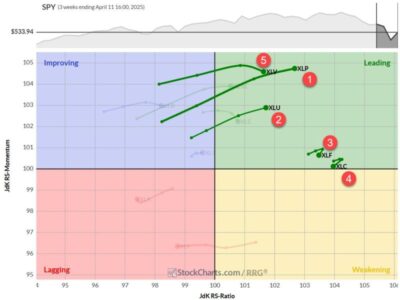
I recently laid out the case to stop government classification of people by race and ethnicity in a Cato Blog post. Those observations were stimulated by The Office of Management and Budget (OMB) posting a notice for comment in the Federal Register with respect to a report from the Federal Interagency Technical Working Group and Race and Ethnicity Standards to revise the existing standards for collecting data by race and ethnicity. Comments are due by April 27, 2023.
I published a similar op‐ed in the Wall Street Journal, which subsequently printed a single letter to the editor in response. That letter captured in a very personal way the divisive harm of classifying human beings by race and ethnicity. The writer had entered “Human Race” as a write‐in response to the 2020 Census questionnaire. Three months later, Census sent an agent to knock on her door to “verify” the answer. During the conversation, the interviewer revealed that his own children found it hard to answer the question because he was White, and his wife was born in Nigeria.
While the overarching concern about this proposed OMB directive is that such an official classification system is inherently a threat to liberty, the details of the proposed changes are technically deficient across several dimensions. OMB specified two “governing principles” of the workgroup as: (1) “Race and ethnicity are sociopolitical constructs…not an attempt to define race and ethnicity biologically or genetically,” and (2) “respondent self‐identification should be facilitated to the greatest extent possible.” (p. 5378) My earlier blog post showed that they, in fact, are not used in that limited way, but even if they were, the proposed classification is deficient.
The proposal cleans up some of the language in the existing standard, such as removing “Negro” from the definition of “Black” and removing “and who maintains tribal affiliation or community attachment” from the definition of American Indian to make it more consistent with the other definitions. But such plausible updates are swamped by the proliferation of more groups required for classifying people into detailed races and making those classifications generally more internally inconsistent.
The current government statistical classification system began early in the 20th century with “race” typically distinguishing between nominally “White,” “Black,” people, with a variety of labels and sometimes adding “American Indian,” or “other.” Since the mid‐to‐late 20th Century, these definitions at geographic continent levels of detail were expanded and became the 1997 OMB Statistical Policy Directive No. 15. The classification in that directive is as follows (in OMB alphabetical order): (p. 5376)
American Indian or Alaska Native: A person having origins in any of the original peoples of North and South America (including Central America), and who maintains tribal affiliation or community attachment.
Asian: A person having origins in any of the original peoples of the Far East, Southeast Asia, or the Indian subcontinent including, for example, Cambodia, China, India, Japan, Korea, Malaysia, Pakistan, the Philippine Islands, Thailand, and Vietnam.
Black or African American: A person having origins in any of the black racial groups of Africa. Terms such as ”Haitian” or ”Negro” can be used in addition to ”Black or African American.”
Native Hawaiian or Other Pacific Islander: A person having origins in any of the original peoples of Hawaii, Guam, Samoa, or other Pacific Islands.
White: A person having origins in any of the original peoples of Europe, the Middle East, or North Africa.
This classification system, of course, has a big flaw – namely classifying people by having their “origin” among the “original peoples” of some piece of geography. But that concept is meaningless. In pre‐history, there were multiple waves of migration across the globe that routinely and repeatedly replaced one set of inhabitants with another by force and/or interbreeding. Even since the beginning of written history, who were the “original peoples” of the island of Britannia? The Britons, Celts, Picts, Belgae, or subsequent waves of invaders – Vikings, Angles, Saxons, Jutes, or Norman French?
This over‐layering of cultures continues even into modern history with cross‐continental shifts such as the Turks who replaced Greeks, Armenians, Kurds, and Persians, many of whom migrated to the United States. Arabs conquered and then migrated to the lands occupied by Egyptians and Berbers in North Africa, and that conflict continues to boil in places like southern and western Morocco. The OMB proposal takes these original failings and makes them worse. It creates a new racial classification for former inhabitants of the Middle East and North Africa (MENA) and removes them from the classification of White. They define NEMA as: “includes all individuals who identify with one or more nationalities or ethnic groups with origins in the Middle East and North Africa. Examples include, but are not limited to, Lebanese, Iranian, Egyptian, Syrian, Moroccan, and Israeli.” (p. 5379)
The proposal claims that this realignment makes the classification more consistent with the “lived experience” of the individuals in the group (p. 5378). Since race is an arbitrary, subjective social classification, trying to classify people that way is a fool’s errand. The two resulting primary groups in this case are so heterogeneous that this distinction between the two is meaningless. It is doubtful that inhabitants of Turkey share more life experiences with Morocco than they do with Albania, or that residents of Tel Aviv share more with Tripoli than they do with London.
The proposal justifies its changes as the preference of “stakeholders.” (p. 5379) But it fails to specify just who those stakeholders are. They certainly include people who believe they could garner some advantage from the government by establishing some new category to balkanize America further. Of course, the more fundamental issue is why the government should be defining people and collecting data based on perceived differences in lived experience. That is inherent in increasing government intrusion and control of personal lives. But even on the face of it, the structure makes no sense.
This increasingly subjective and argumentative classification is also transferred to all other racial distinctions, which seem to adopt the general format of “includes all individuals who identify with one or more nationalities or ethnic groups with origins in [some geographic area].” We have recently seen the turmoil caused by a local leader of the NAACP claiming to be African American, when there was no objective evidence that she had any African ancestry, and a United States Senator claiming close ethnic kinship with a Native American tribe, and then withdrawing the claim after objective evidence said otherwise. So, the official OMB posting proposes a statistical classification system for race in the United States that is based on a similarly subjective and pointless method.
In 1972, the Census Bureau began publishing data by “Hispanic origin.” This is the only classification that is linguistically based. The statistical standards call it an “ethnicity” and specify its members can be of any race. The current standard is to ask first whether or not the individuals consider themselves to be “Hispanic or Latino” with a simple yes or no answer. The current standard then asks for their race. This is not done for any other linguistic group – Francophone, Cantonese, or Anglophone, three other relatively large and dispersed linguistic groups.
The proposed new standards claim that they need to change how the Hispanic feature is administered because respondents seem to be confused by the Hispanic question and sometimes do not then go on to answer the race question that follows. (p. 5379) Published Census Bureau reports, however, give a different interpretation: “a large proportion of the Hispanic population does not identify with any of the current Office of Management and Budget (OMB) race categories.” So, which is it, are the respondents confused, or do they affirmatively identify with something else other than the options offered? In the 2020 Census, of respondents who selected “yes” to the Hispanic question, a huge 43.6 percent responded either “Some other race alone” or made no selection to the race question.
The working group report never considers the possibility that the entire schema requiring racial and ethnic identification in the first place might be confusing and inappropriate. Their solution is to simply move “Hispanic or Latino” into the same list along with White, Black or African American, Asian, American Indian or Alaska Native, Middle Eastern or North African, Native Hawaiian or Pacific Islander. The proposal includes instructions to “select all that apply.” If they think that will lead more Hispanic or Latino respondents to pick one of the races in addition to the ethnicity, they are seriously deluded. In fact, this structure makes that less likely. Decades of research and experience show that when two separate tasks (whether in surveys, work instructions, or other contexts) are highlighted and described distinctly, the results are better than when the instructions are in a single undifferentiated task. Furthermore, by placing the Hispanic designation on the same list as the former race designations, the proposal eliminates the difference between race and ethnicity. Since both are so poorly defined, that is probably not a terribly bad result, but now the definition of race/ethnicity becomes even more elastic and meaningless. Some people will select an option based on the geographic site from which their ancestors came, others based on the language that their ancestors spoke. Some will define their race/ethnicity by the geographic location of their ancestors 200 years ago – many “White” Europeans – and others by their ancestors’ location last week.
Note that 88 percent of Hispanics identify as “White” when the ethnicity and race questions are answered separately and sequentially through direct responses to Census field representatives. So, removing the two‐step process is most likely to reduce the proportion responding “White.” (2018 Current Population, Annual Social and Economic Supplement, public microdata)
One would think that Spaniards, namely citizens of Spain, would qualify as “White” from the definition of that race, but in the proposed classification for use in surveys, “Spaniard” is listed as a detailed response under “Hispanic or Latino,” and is not listed under “White,” while countries with populations one‐tenth of the size of Spain, such as Norway and Ireland, are listed under “White.” This would further the confusion and reduce the responses to “White.” Plus, it directly contradicts the beliefs of Andalusians, Basques, Catalans, and possibly others, who might acknowledge the fact of their citizenship in Spain but would rather vehemently deny that they are Hispanic.
OMB proposes to classify all of us into still more categories that it characterizes as racial and ethnic based on lived experience. The proposal extends and expands a threat to our individual liberty. But even if there were a legitimate need for government to own a classification scheme for race and ethnicity, the one proposed is seriously flawed. Consider reviewing this proposal yourself and commenting on it during the public comment period before April 27, 2023.








